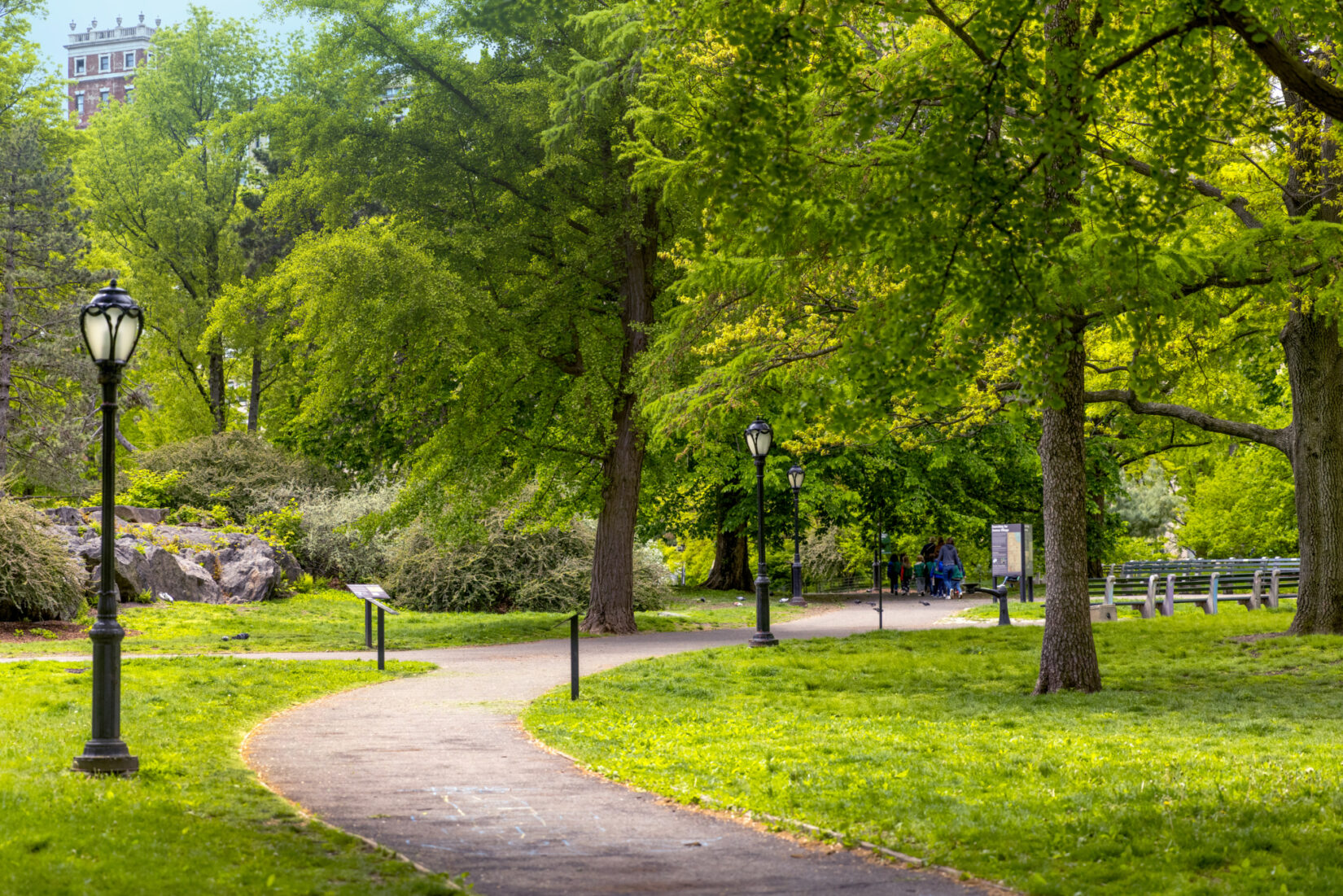Seneca Village

Honoring Seneca Village: a powerful story of rediscovery and remembrance.
Before Central Park, the landscape along what is now the Park’s perimeter from West 82nd to 89th Street was home to a thriving, predominantly African-American community known today as Seneca Village. Established in 1825, the village began when free Black residents from downtown started purchasing land within what would later become Central Park.
Seneca Village was a relatively prosperous community with churches, a school, and high rates of property ownership, which in some cases made male landowners eligible to vote. When the City acquired the land for Central Park in 1857, its residents were displaced and forgotten. Historians rediscovered its existence in the 1990s, and in recent years, the Conservancy has worked to trace and share its history.
Now, on the 200th anniversary of Seneca Village’s inception, the Central Park Conservancy is launching a multiyear program to inform the permanent commemoration of Seneca Village within the Park with generous support from the Mellon Foundation and their Monuments Project.
Pictured above: Detail of Egbert Viele’s Map of the Lands Included in the Central Park, 1856. Collection of New York City Municipal Archives. Click for full image.

A COMPREHENSIVE Q&A ABOUT SENECA VILLAGE
The Conservancy has undertaken a major effort to conduct new research on Seneca Village and also share its history within the physical landscape of the Park. Explore our comprehensive Q&A to discover more about the history of the site and the community.
HOW THE PARK’S LANDSCAPE PROVIDES A LIVING NARRATIVE OF SENECA VILLAGE
The implementation of Manhattan’s 1811 street grid plan leveled much of the island’s natural topography, but with the construction of Central Park, key elements of Seneca Village’s landscape endured. Today, this site remains one of the least altered areas—not only in the Park but in all of Manhattan. The surviving rocks and hills that once formed the literal foundation of the community continue to anchor its memory, offering a rare and tangible connection to the past.

A NEW INITIATIVE SUPPORTED BY THE MELLON FOUNDATION
WIELDING THE POWER OF PARTNERSHIPS AND PROGRAMMING TO INFORM COMMEMORATION
- Deepen public awareness and understanding of Seneca Village’s history and significance.
- Encourage new, creative ways of thinking about commemoration through collaborations with artists and historians.
- Foster dialogue on how race and history shape public spaces.
The initiative will culminate with the development of a community-informed framework to guide the next phase of the project: designing a permanent commemoration of Seneca Village in Central Park. More than a marker of the past, this project aims to position the Seneca Village community as a pivotal chapter in the broader story of American history, inspiring reflection and a deeper connection to the past.


Deepening Our Understanding Together
"Seneca Village is a vital part of the history of New York City and Central Park, and the Central Park Conservancy is thrilled to be supported by the Mellon Foundation as we lead these conversations with the public to deepen our collective understanding of its legacy. By doing so, we can continue the important work of ensuring that Seneca Village’s history is celebrated for generations to come."
ENVISIONING SENECA VILLAGE 3D MODEL
Explore the landscape and residences in greater detail with Envisioning Seneca Village, a project that depicts what Seneca Village may have looked like in the summer of 1855—about two years before the community was displaced by the City of New York to build Central Park. The project is anchored in extensive scholarship and aims to make the village’s history visible to a wide audience. Envisioning Seneca Village is a collaborative project between Gergely Baics, Meredith Linn, Leah Meisterlin, and Myles Zhang that integrates their expertise in archaeology, social history, historical geographic information systems (GIS), and digital architectural reconstruction. The project is also a work in progress with updates, additions, and new features planned soon. Note: the model is best viewed on desktop.
Download this Map-Based Tour.
STAY CONNECTED
Join the conversation through updates about our ongoing work, upcoming programs and events, and more.
Learn More
Dive deeper into Seneca Village and its residents with our resources below.
-
Articles
How to Engage with the History of Seneca Village
The current movement for racial justice—which includes elevating Black history, culture, and stories—has sparked a renewed interest in Seneca Village, a community of predominantly African-Americans that existed before the creation of Central Park.
Tags: Tips for Visiting / About the Conservancy
-

Articles
Seneca Village: The Williams Family Legacy
-

Programs
Discovery Journal
Kids, ready to travel back in time to learn about the history of Central Park? -

Programs
Weekly Walk: Seneca Village

EXPLORE THE LIVING LANDSCAPE OF SENECA VILLAGE WITH A CONSERVANCY EXPERT
On this tour, Conservancy guides help visitors interpret the physical landscape of Seneca Village, offering insights into the critical role it played for Black New Yorkers seeking refuge from the overcrowding and racial discrimination that defined 19th-century New York City.









